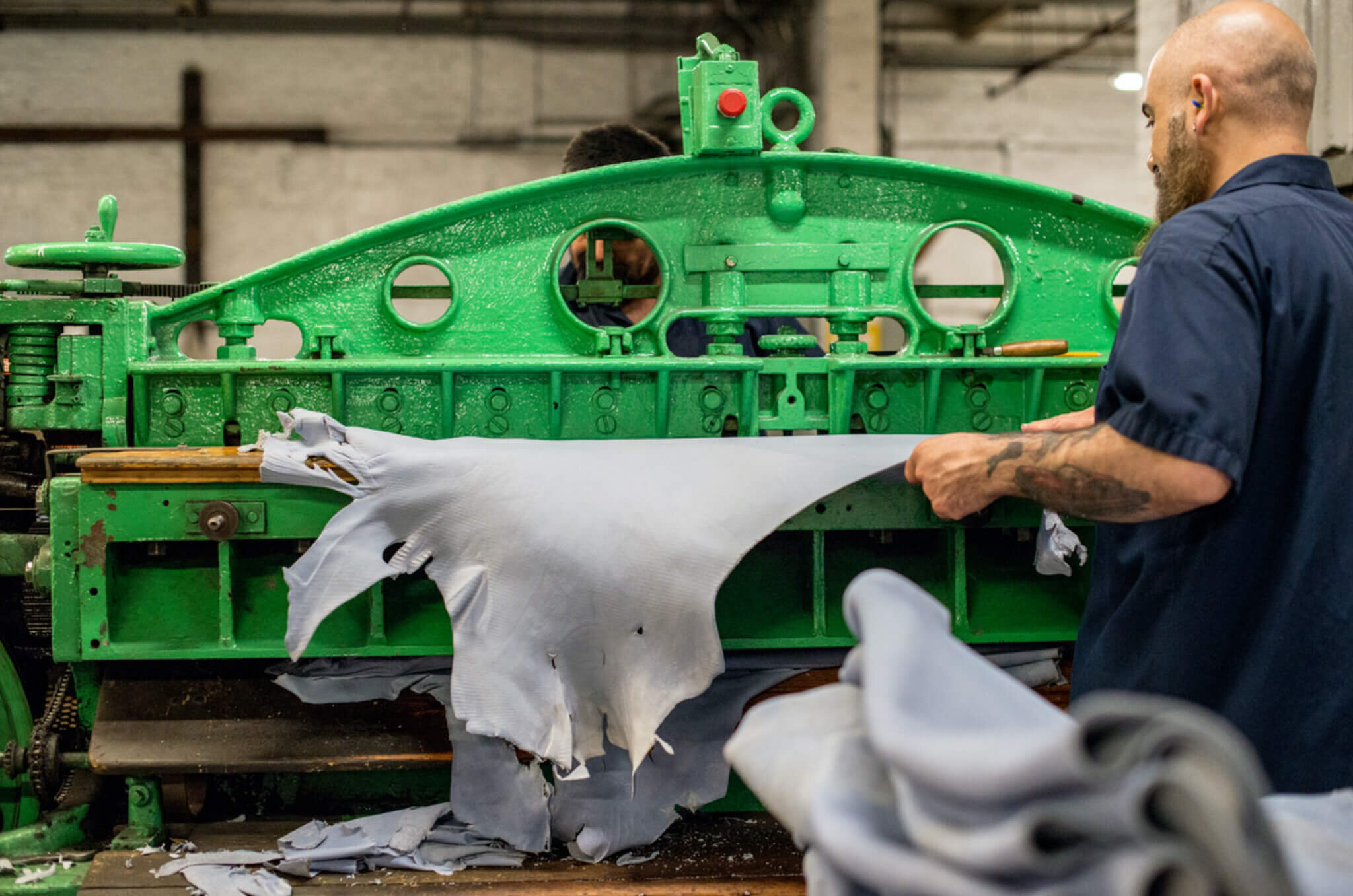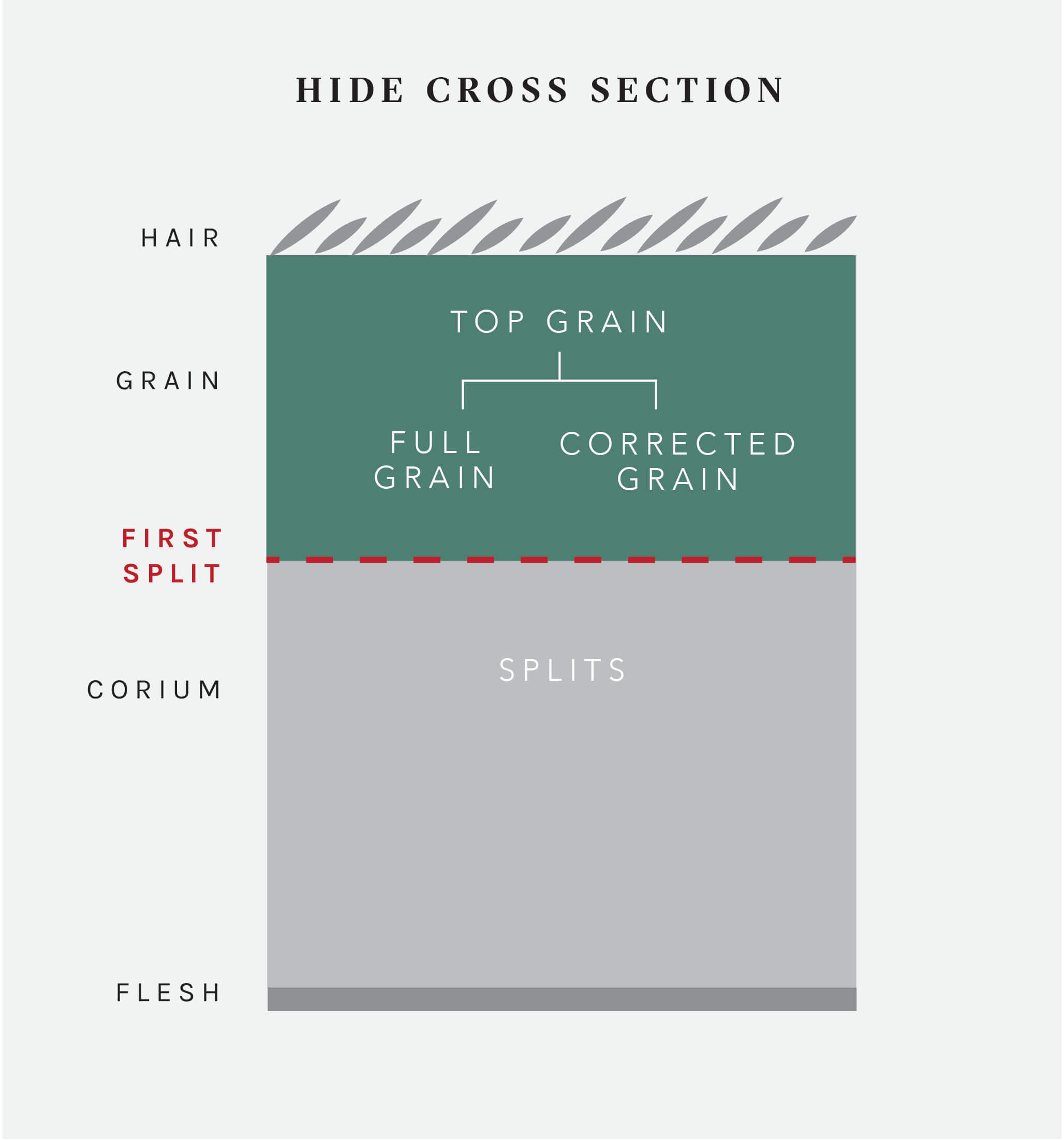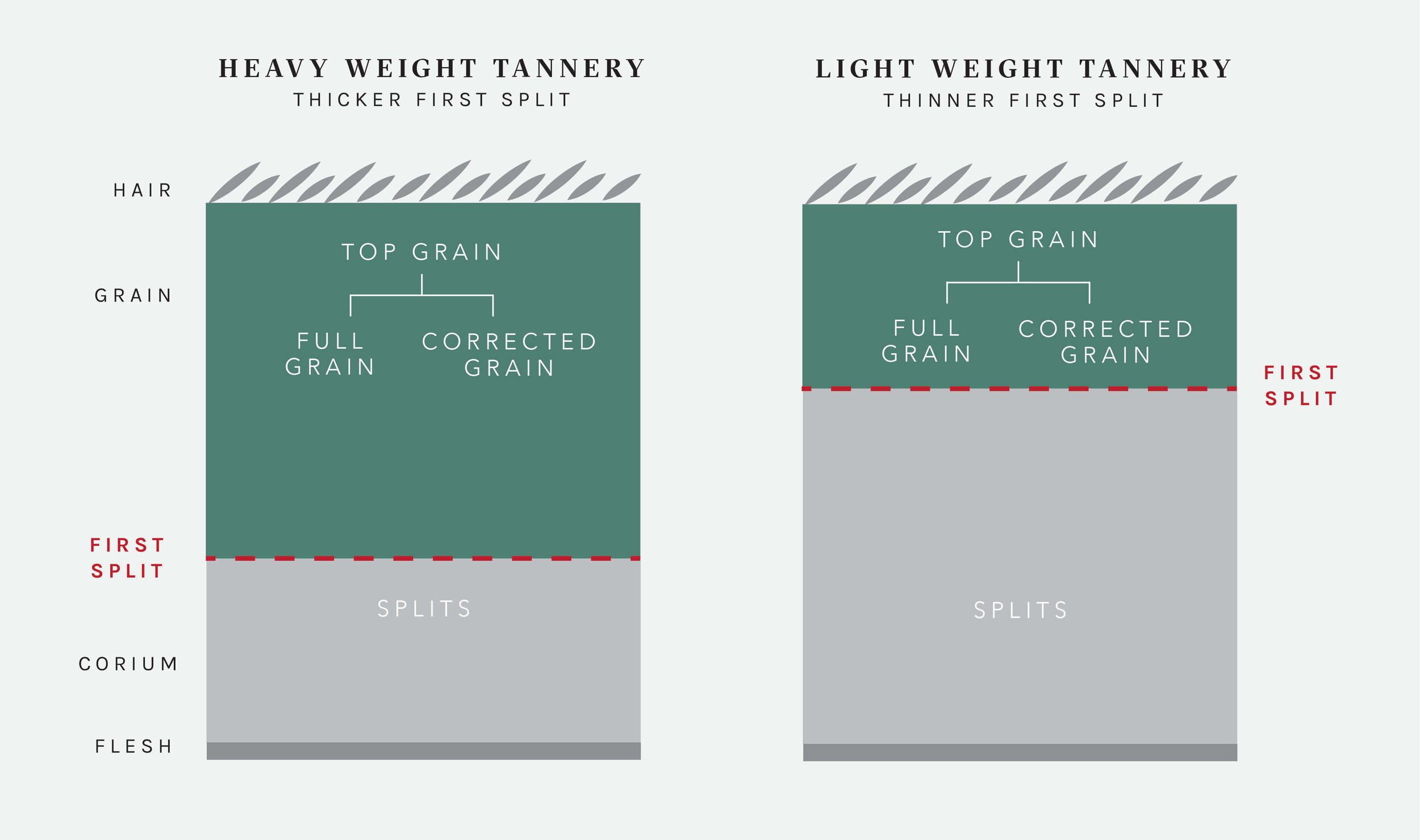Understanding Leather Grains
Top Grain, Full Grain, Corrected Grain
The topic of leather grains starts with the splitting of leather. Splitting simply means the thinning of leather. In the context of this article, we are talking about splitting an entire hide of leather (not just an edge or small portion).
The image shows an operator feeding wet blue through a splitting machine. Wet blue is leather after its initial tanning.
Top Grain
After its initial tanning, the wet blue is split into an upper layer and a lower layer. Leather from the upper layer is considered top grain.
Top grain leather can be full grain or corrected grain.
The leather from the lower layer is called a split.
Did you know? This initial split does not happen in the same place across every tannery. Rather, the location of the initial split is different for different tanneries. For example, Horween is considered a heavy weight tannery, so their initial split has a heavier/thicker upper layer. Upholstery tanneries create leather in lighter weights, so their initial split is much lighter/thinner.
Full Grain
Full grain is leather from the upper part of the hide, and the outer surface has NOT been polished or corrected. If you look very closely at the leather, you can actually see the hair follicles.
Full grain leather is also top grain leather.
Examples of Full Grain Leather: Horween Dublin, Derby, Essex
Corrected Grain
Corrected grain is leather from the upper part of the hide where there the surface HAS been polished or buffed.
Corrected grain is also top grain leather.
Just like wood, leather is corrected by using different grits of sandpaper. Heavy sandpaper will create more of a nubuck by taking more of the grain off and raising it. A finer sandpaper will create a very lightly corrected leather, such as Chromexcel. Below is an image of a sanding machine used to correct top grain leather.
A sanding machine used to correct top grain leather.
Questions & Answers
What are the benefits of top grain leather?
Stronger
Will age better and last longer
More options for finishes, colors, and feels
Is top grain, full grain, or corrected grain best?
These labels do not mean one is better than the other, but rather it is question about which aesthetic you prefer. When a leather is designed, the grain is one of the tools used to achieve a final look.
What do tanneries do with the lower layer of leather (splits)?
Tanneries will sell their splits to other tanneries that will finish and sell the splits to customers.
What type of leather does The Tannery Row carry?
The vast majority of the leather we carry is top grain leather. We carry both corrected top grain and full grain. The only exception to this is suedes, which by definition come from a split.
Let’s Recap
After the initial tanning, leather is split into an upper layer and a lower layer. The upper layer is considered top grain, and can be corrected or uncorrected. The lower layer can be split further/refinished/used for suede.
TOP GRAIN
Top grain is leather that comes from the upper area of the hide. Top grain leather can be full grain or corrected grain.
FULL GRAIN
Full grain is leather from the upper part of the hide, and the outer surface has NOT been polished or corrected. If you look very closely at the leather, you can actually see the hair follicles. Full grain leather is also top grain leather.
CORRECTED GRAIN
Corrected grain is leather from the upper part of the hide where there the surface HAS been polished or buffed. Corrected grain is also top grain leather. Nubuck is an example of corrected grain.
SPLITS
Splits come from the lower layer of the skin. They can be corrected and refinished to mimic grain.
GENUINE LEATHER
Simply means it’s real leather, but does not indicate what part of the hide the leather is from. The term often implies the leather is from the lower portion of the skin.



